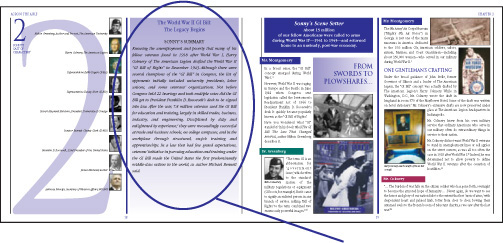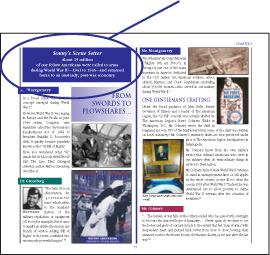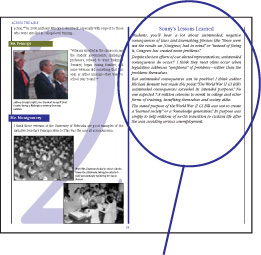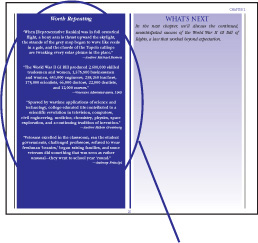
I call Across the Aisle a visual (and participative) case study because, as students, you will study and take on the roles of scores of people who worked on the Montgomery GI Bill and shepherded it into law over seven years. You’ll debate and discuss the bill just as we did, using words drawn from the actual legislative history.
These are words said or written, for example, in the House and Senate chambers, Congressional committees, press conferences, Congressional correspondence and reports, White House events and correspondence, newspapers, and staff papers.
I call this a visual case study because just as responsibility is the best teacher, to me, seeing is learning. I want to put a human face on the legislative process.
I’ve included several hundred visuals in the form of illustrations, quotations, and photos that I hope will bring the case study alive for you.
I’ve divided the case study into 17 chapters, many of which depict how the legislative road is filled with “potholes.”

All of the substantive debate appears on the pages. Sonny’s Cast of Characters tells you who is talking. By reading their words, you, in effect, say them for yourself.
You’ll hear the story from me firsthand, as I’m your host and guide in the form of moderator.

At the beginning of each chapter, you’ll see Sonny’s Summary—a useful overview—and Sonny’s Scene Setter.

In Chapters 5 to 14, you’ll also see the Legislative Journey Guide, which tells you where we are on the Legislative Journey chart on pages 10-11.

At the end of each chapter you’ll see what I call Sonny’s Lessons Learned.

Also at the end of that chapter is a section called Worth Repeating —featuring the most instructive statements.